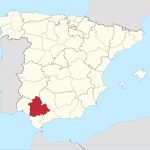The Discovery of the Tomb of king Thutmose II: The Last Missing Tomb of the Dynasty 18 Kings
The First Royal Tomb discovery since the unveiling of King Tutankhamen’s Tomb in 1922
A joint Egyptian-British archaeological mission, led by the Supreme Council of Antiquities and the New Kingdom Research Foundation, has successfully uncovered the tomb of king Thutmose II, the last missing royal tomb of Dynasty 18. This remarkable discovery was made during excavation and research work at Tomb C4, whose entrance and main corridor were initially discovered in 2022 in the C Valley, located approximately 2.4 kilometers west of the Valley of the Kings in Luxor’s western mountain region. New evidence definitively identified the tomb as belonging to Pharaoh Thutmose II.
H.E. Sherif Fathi, the Minister of Tourism & Antiquities, praised the excavation efforts in the area, emphasizing the significance of this discovery in revealing further secrets and treasures of Egypt’s ancient civilization. He noted that this is the first royal tomb to be discovered since the groundbreaking discovery of King Tutankhamun’s tomb over a century ago.
Dr. Mohamed Ismail Khaled, Secretary General of the Supreme Council of Antiquities, explained that when the entrance and main corridor of Tomb C4 were uncovered in October 2022, the team initially believed it to be the tomb of one of the royal wives of the Thutmosid kings. This assumption was based on its proximity to the tombs of King Thutmose III’s wives and Queen Hatshepsut’s tomb, which she had originally prepared as a royal consort before ascending the throne as pharaoh. However, continued excavation this season unearthed new archaeological evidence that identified the tomb’s owner as Pharaoh Thutmose II. Burial arrangements for the king were overseen by Queen Hatshepsut, his wife and half-sister.

Among the significant findings were fragments of alabaster jars inscribed with the name of Pharaoh Thutmose II, identified as the “deceased king,” alongside inscriptions bearing the name of his chief royal consort, Queen Hatshepsut. These inscriptions confirmed the tomb’s ownership.
Dr. Khaled described this discovery as one of the most significant archaeological breakthroughs in recent years. The artifacts found within the tomb provide critical insights into the history of the region and the reign of Thutmose II. Notably, this discovery includes funerary furniture belonging to the king, marking the first-ever find of such items, as no funerary furniture of Thutmose II exists in museums worldwide.

Mohamed Abdel Badi, Head of the Egyptian Antiquities Sector and co-leader of the mission, revealed that the tomb was in a poor state of preservation due to flooding shortly after the king’s death. Water inundated the tomb, damaging its interior and necessitating extensive restoration work by the archaeological team to recover fallen plaster fragments. Preliminary studies suggest that the tomb’s original contents were relocated to another site during ancient times after the flooding.
Among the recovered fragments were remnants of plaster featuring blue inscriptions, yellow star motifs, and portions of the Book of Amduat, a key religious text associated with royal tombs of ancient Egypt.

Dr. Piers Latherland, head of the British side of the mission, noted that the tomb’s simple architectural design served as a prototype for later royal tombs of Dynasty 18. It features a plastered corridor leading to the burial chamber, with the floor of the corridor elevated approximately 1.4 meters above the burial chamber’s floor. The elevated corridor is believed to have been used to relocate the tomb’s contents, including the mummy of Thutmose II, following the flooding.
Dr. Latherland added that the mission, which has been conducting archaeological surveys at the site for two years, will continue its work to uncover more secrets of the area and locate the final resting place of the tomb’s original contents.
Press release from the Egyptian Ministry of Tourism and Antiquities



